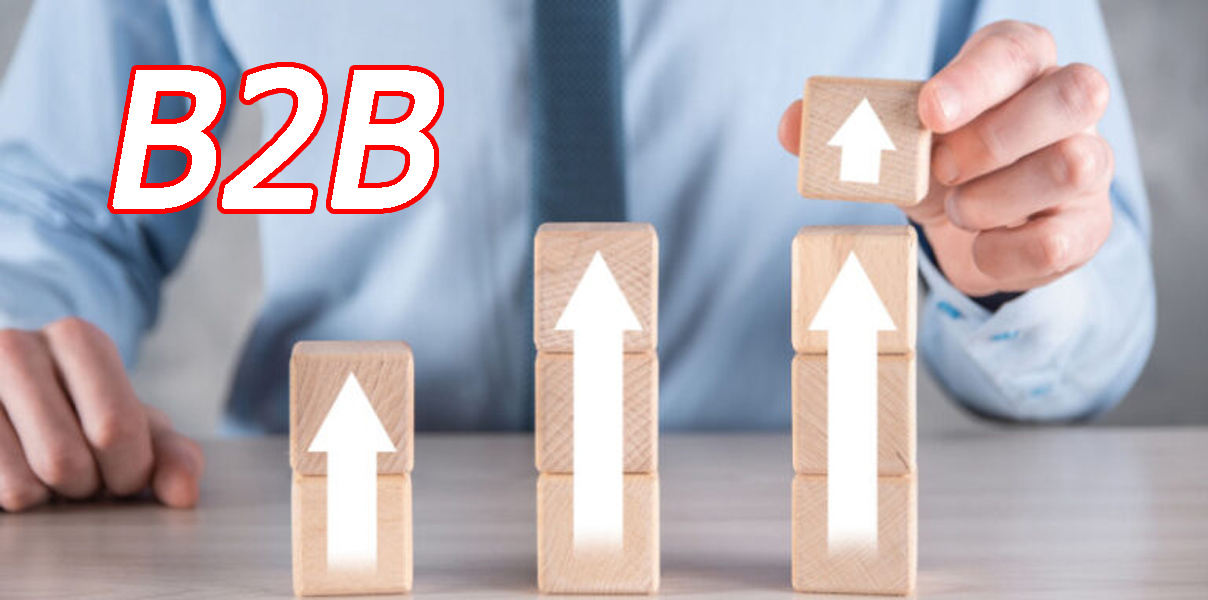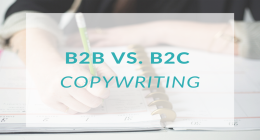1. Build your brand
The most effective way to market your business and achieve long-term growth is to build a brand. This knowledge comes directly from LinkedIn’s B2B Institute. Over time, building a strong brand has proven to be more successful than short-term marketing.
According to a LinkedIn study, only 4% of B2B marketers measure the effectiveness of their marketing beyond six months. Want to know how long it takes to build a brand? You guessed it! More than 6 months.
Taking a long-term approach and investing in your brand will position you better than 95% of your competitors who rely on short-term strategies.
Building your brand starts with adding value. This can be done by uploading videos to YouTube, recording podcasts, writing blogs, creating value-oriented social media posts, etc. If you promote your brand to the right audience, eventually they will understand that they need the services you offer. And imagine how great it would be if they thought of your company first.
2. SEO – Search Engine Optimization
How and where do you find companies that offer the services you offer? Most likely, your search will start with a search engine. Whether it’s Google, Yahoo, or the App Store, just being there while your customers are searching for your services can catapult your business to new heights.
Now tell us about another free traffic source that can bring you in-market traffic, or users who are actively looking for alternatives to your website. Isn’t that right? This is because SEO is the most successful marketing platform for B2B marketing companies.
Nothing feels better than being at the top of search results for a phrase that is searched hundreds of thousands of times a month. This is available daily, weekly and monthly for free. So when we create a B2B marketing campaign for our clients, the first thing we do is write down SEO.
To follow search engine best practices, you need to find high traffic keywords, place them on your site and optimize your site properly. Doing this and increasing your website visibility over time will help your business rank higher in search engines, giving you free traffic and leads.
3. Google Ads
Google Ads should be the second priority in your B2B marketing plan. It serves the same purpose as SEO: Google Ads helps you attract people who search for you. We speak for all B2B companies when we say there’s nothing better than qualified leads, especially those with expensive products and long sales processes.
So using Google Ads to target unique search queries can be extremely beneficial. But here’s the thing: Google Ads can quickly become cost-prohibitive. You get paid every time someone clicks on your ad, and those clicks aren’t cheap.
The price of a single click can range from a few dollars to hundreds of dollars. This depends on your industry and the level of competition.
If you understand how to use Google Ads, you’ll find that you can always easily achieve your goals by targeting very unique terms that your competitors haven’t considered. This is different from SEO, where you get free traffic by showing search engines that your website is a great fit for their search results. So with SEO, you get a much higher return on investment. Google Ads, on the other hand, start working immediately. You can trigger Google Ads and start generating traffic within minutes.
4. Facebook Ads
When used correctly, Facebook Ads can be a great way to increase brand awareness, drive traffic, and generate leads. Some argue that Facebook is not a successful forum for businesses and that you would be better off using LinkedIn.
Here’s why we disagree:
Everyone is on Facebook.
Facebook Ads are 10x cheaper than LinkedIn Ads.
Facebook Ad targeting is not available on any social media platform. You can target users not only based on job title or industry, but also behaviors, lookalike demographics, and remarketing demographics.
This is why Facebook Ads is important to us as a B2B company. In other words, you need to send the right message to the right person at the right time.
You have to create value.
Don’t jump in right away, but build value over time by providing a good offer that piques people’s interest, with additional email follow-ups and retargeting. 5. LinkedIn Messenger Ads
Despite the high cost of advertising on LinkedIn, there are still many ways to use LinkedIn for B2B marketing. For businesses, in-email ads, Sales Navigator, and organic LinkedIn marketing techniques are effective. Supported messages are delivered directly to your audience through in-email ads.
Your content is more likely to be noticed because it appears directly in your target audience’s inbox. To be honest, we have had very little success with lead generation ad campaigns for B2B customers in the LinkedIn news feed. However, we have had a lot of success generating leads with email ads.
6. LinkedIn Sales Navigator
LinkedIn Sales Navigator is similar to LinkedIn in-email ads, but more powerful.
It is much more targeted and personalized than email ads, so you have a higher chance of success. After you enter your targeting criteria, you can refine it with more detailed targeting options, such as the last time someone posted something online.
7. Organic Marketing on LinkedIn
The good news is that LinkedIn’s news feed is still in its “golden age,” meaning you can still get a lot of organic views and interactions for free. Because LinkedIn’s news feed is still new, there are more opportunities to use it for free to improve your B2B marketing.
You can use both your personal and company accounts to share regularly on your news feed. And don’t forget to post content that your ideal customers will find valuable.
You can also post using LinkedIn. Many people use LinkedIn to stay up to date on the latest news and research information. By posting useful content, you can develop as a thought leader and grow your B2B marketing brand.
#8. Email newsletters
They say email is outdated, but the truth is, it’s still one of the most powerful ways to nurture your audience. 90% of people still check their email every day. That’s why B2B marketing needs to take email marketing seriously.
Even if you get a lot of buzz, you still need to build relationships over time to nurture valuable leads to conversion. That’s why you need to use email marketing. Email newsletters allow you to continue growing your brand while getting people to buy your services.
If you’re confident in this, here’s what I recommend: Start sending out weekly email newsletters if possible. But whatever you do, do something. As a B2B company, you can’t afford not to send emails to your prospects. This means that you can automatically send emails at your desired intervals without lifting a finger.
For B2B companies, this can be extremely helpful, especially if you carefully craft these emails to fit the psychology of people buying your products or services.
We hope that the strategies and tips above will help you get closer to your B2B business goals.









